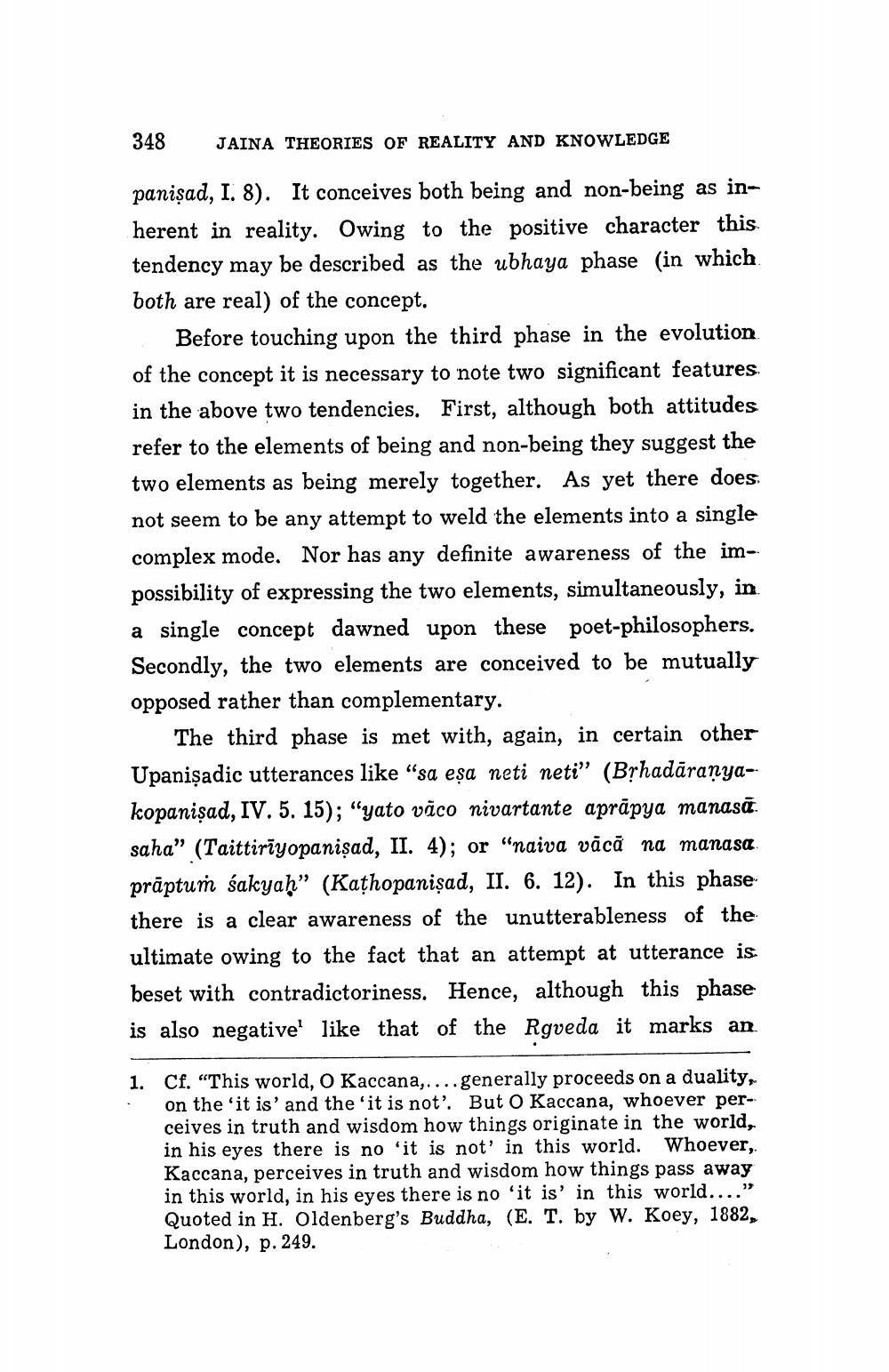________________
348
JAINA THEORIES OF REALITY AND KNOWLEDGE
paniṣad, I. 8). It conceives both being and non-being as inherent in reality. Owing to the positive character this tendency may be described as the ubhaya phase (in which both are real) of the concept.
Before touching upon the third phase in the evolution. of the concept it is necessary to note two significant features in the above two tendencies. First, although both attitudes refer to the elements of being and non-being they suggest the two elements as being merely together. As yet there does. not seem to be any attempt to weld the elements into a single complex mode. Nor has any definite awareness of the impossibility of expressing the two elements, simultaneously, in a single concept dawned upon these poet-philosophers. Secondly, the two elements are conceived to be mutually opposed rather than complementary.
The third phase is met with, again, in certain other Upanisadic utterances like "sa eșa neti neti" (Bṛhadaranyakopaniṣad, IV. 5. 15); "yato vaco nivartante aprāpya manasā saha" (Taittiriyopaniṣad, II. 4); or "naiva vāca na manasa praptum sakyah" (Kathopanisad, II. 6. 12). In this phase there is a clear awareness of the unutterableness of the ultimate owing to the fact that an attempt at utterance is beset with contradictoriness. Hence, although this phase is also negative' like that of the Rgveda it marks an
1. Cf. "This world, O Kaccana,....generally proceeds on a duality, on the 'it is' and the 'it is not'. But O Kaccana, whoever perceives in truth and wisdom how things originate in the world, in his eyes there is no 'it is not' in this world. Whoever, Kaccana, perceives in truth and wisdom how things pass away in this world, in his eyes there is no 'it is' in this world...." Quoted in H. Oldenberg's Buddha, (E. T. by W. Koey, 1882, London), p. 249.




